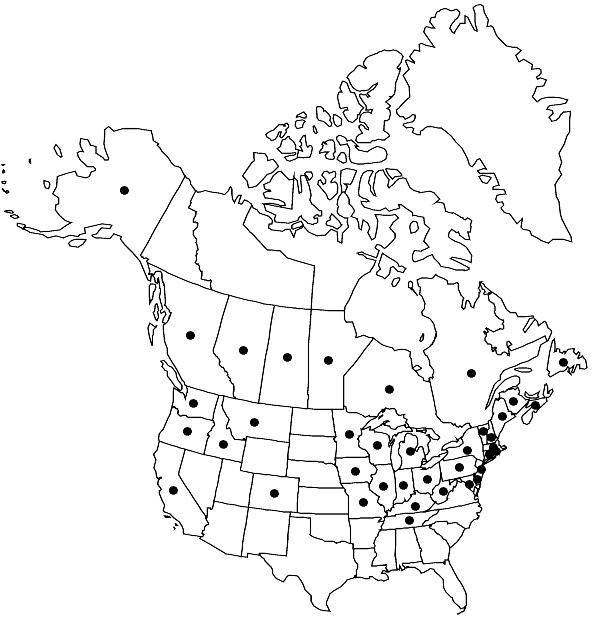Difference between revisions of "Sphagnum fimbriatum subsp. fimbriatum"
FNA>Volume Importer |
FNA>Volume Importer |
||
| Line 22: | Line 22: | ||
|elevation=low to high elevations | |elevation=low to high elevations | ||
|distribution=Alta.;B.C.;Man.;N.B.;Nfld. and Labr. (Nfld.);N.S.;Ont.;Que.;Sask.;Alaska;Calif.;Colo.;Conn.;Del.;Idaho;Ill.;Ind.;Iowa;Ky.;Maine;Md.;Mass.;Mich.;Minn.;Mo.;Mont.;N.H.;N.J.;N.Y.;Ohio;Oreg.;Pa.;R.I.;Tenn.;Vt.;Wash.;W.Va.;Wis.;South America;Eurasia;Pacific Islands (New Zealand). | |distribution=Alta.;B.C.;Man.;N.B.;Nfld. and Labr. (Nfld.);N.S.;Ont.;Que.;Sask.;Alaska;Calif.;Colo.;Conn.;Del.;Idaho;Ill.;Ind.;Iowa;Ky.;Maine;Md.;Mass.;Mich.;Minn.;Mo.;Mont.;N.H.;N.J.;N.Y.;Ohio;Oreg.;Pa.;R.I.;Tenn.;Vt.;Wash.;W.Va.;Wis.;South America;Eurasia;Pacific Islands (New Zealand). | ||
| − | |discussion=<p>Sporophytes are very common in <i></i>subsp.<i> fimbriatum</i>. It is associated with <i>Sphagnum centrale</i>, <i>S. fallax</i>, <i>S. henryense</i>, <i>S. affine</i>, <i>S. palustre</i>, <i>S. russowii</i>, <i>S. teres</i>, <i>S. warnstorfii</i>, and <i>Drepanocladus</i> exannulatus. It is normally very easily recognizable because of its very small size, pale green color, and distinct terminal bud. In Alaska it overlaps with <i></i>subsp.<i> concinnum</i>, which has a similarly very broad and lacerate stem leaf apex but the lacerate margin does not extend down the sides of the leaf. Subspecies concinnum is also a more compact-growing taxon with a distinctly browner color.</p> | + | |discussion=<p>Sporophytes are very common in <i></i></i>subsp.<i><i> fimbriatum</i>. It is associated with <i>Sphagnum centrale</i>, <i>S. fallax</i>, <i>S. henryense</i>, <i>S. affine</i>, <i>S. palustre</i>, <i>S. russowii</i>, <i>S. teres</i>, <i>S. warnstorfii</i>, and <i>Drepanocladus</i> exannulatus. It is normally very easily recognizable because of its very small size, pale green color, and distinct terminal bud. In Alaska it overlaps with <i></i></i>subsp.<i><i> concinnum</i>, which has a similarly very broad and lacerate stem leaf apex but the lacerate margin does not extend down the sides of the leaf. Subspecies concinnum is also a more compact-growing taxon with a distinctly browner color.</p> |
|tables= | |tables= | ||
|references= | |references= | ||
| Line 46: | Line 46: | ||
|publication year= | |publication year= | ||
|special status= | |special status= | ||
| − | |source xml=https://jpend@bitbucket.org/aafc-mbb/fna-data-curation.git/src/ | + | |source xml=https://jpend@bitbucket.org/aafc-mbb/fna-data-curation.git/src/f6b125a955440c0872999024f038d74684f65921/coarse_grained_fna_xml/V27/V27_90.xml |
|genus=Sphagnum | |genus=Sphagnum | ||
|section=Sphagnum sect. Acutifolia | |section=Sphagnum sect. Acutifolia | ||
Revision as of 20:41, 24 September 2019
Plants typically small and slender; capitulum small and with a conspicuous terminal bud; green to yellowish brown. Stem leaves broad-spatulate, 0.8–1.5(–2) mm, strongly lacerate across the broad apex and partway down the sides, border scarcely to moderately broadened at leaf base (0.25 width of base or less). Sexual condition monoicous. Spores 20–27 µm, finely papillose on both surfaces; proximal laesura less than 0.5 spore radius.
Phenology: Capsules mature late spring and early summer.
Habitat: Minerotrophic, common at the mineral soil margins of bogs and poor fens, medium open and forested fens
Elevation: low to high elevations
Distribution

Alta., B.C., Man., N.B., Nfld. and Labr. (Nfld.), N.S., Ont., Que., Sask., Alaska, Calif., Colo., Conn., Del., Idaho, Ill., Ind., Iowa, Ky., Maine, Md., Mass., Mich., Minn., Mo., Mont., N.H., N.J., N.Y., Ohio, Oreg., Pa., R.I., Tenn., Vt., Wash., W.Va., Wis., South America, Eurasia, Pacific Islands (New Zealand).
Discussion
Sporophytes are very common in subsp. fimbriatum. It is associated with Sphagnum centrale, S. fallax, S. henryense, S. affine, S. palustre, S. russowii, S. teres, S. warnstorfii, and Drepanocladus exannulatus. It is normally very easily recognizable because of its very small size, pale green color, and distinct terminal bud. In Alaska it overlaps with subsp. concinnum, which has a similarly very broad and lacerate stem leaf apex but the lacerate margin does not extend down the sides of the leaf. Subspecies concinnum is also a more compact-growing taxon with a distinctly browner color.
Selected References
None.